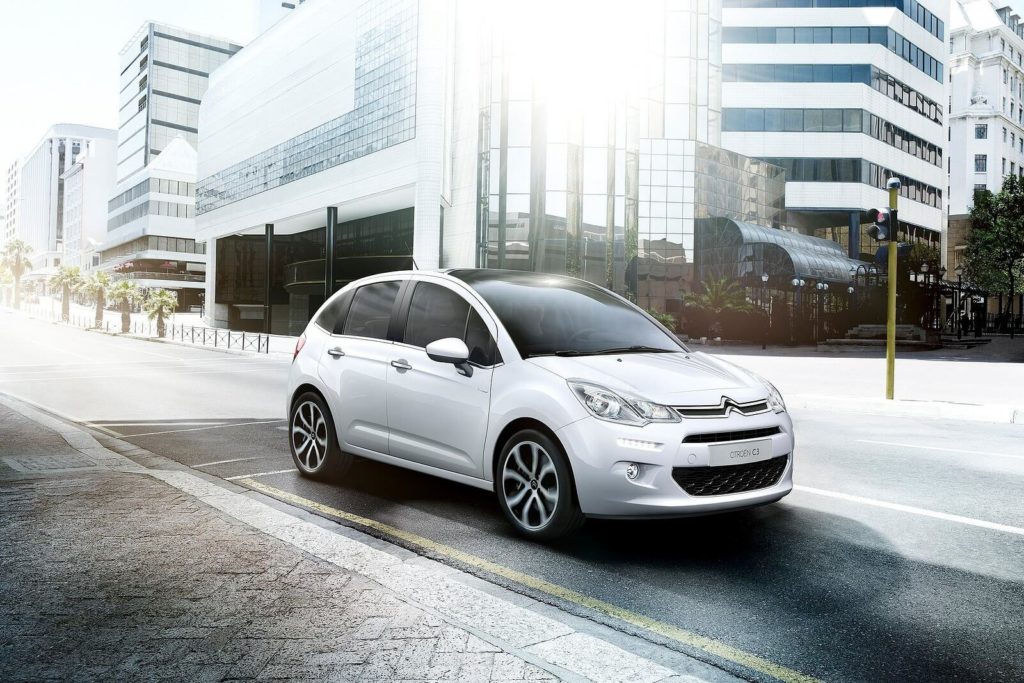A funky French icon, Citroën is synonymous with innovation, affordability and quirky looks. Although current models are less outlandish in appearance, for much of the marque’s history, there was absolutely no mistaking a Citroën. Outside of France, driving one was akin to making a fashion statement.
But, when did Citroën start making cars? And when did they buy Maserati?! OSV takes a look at the colourful history of the popular French manufacturer…
When did Citroën start making cars?
Andre Citroën started making double helical gears in 1912. This is where the double chevron logo came from, in case you were wondering.
In 1913, he took over Mors automobile company and his output increased tenfold. However, like many European manufacturers around this time, focus turned towards the war effort. And in 1914, Citroën were given the go-ahead by the French government to increase their output of munition shells.
It was after the war in 1919, that Citroën started building cars. His mass production technique was borrowed from one Henry Ford and, within a year, Citroën were producing 100 cars a day.
His first model was the Type A, a basic model that showed no hint of designs to come.
It was the marketing ploys that really made the brand stand out. [vc_column width=”1/3″]Click to view larger image[vc_single_image image=”43216″ img_size=”medium” onclick=”link_image”]From the years 1925 – 1934, the entire Eiffel Tower was lit up with the Citroën name, the Guinness record for the world’s largest advertising sign.
Other stunts included ferrying journalists and scientists across Asia, Africa and North America in Citroën cars, as well as being the first car to traverse the Australian continent.
But, Citroën did become known for their innovations. In 1924 they produced the first all-steel bodied car in Europe, and in 1934 created the first mass-produced front wheel drive car. This was in the form of the Traction Avant, which also featured the independent wheel suspension.
The Rosalie, which was also introduced in 1934, was the first commercial passenger model with a diesel engine.
When did Citroën go bankrupt?
While the Traction Avant was groundbreaking, the manufacturer had overstretched their finances and filed for bankruptcy the same year it was introduced.
They were taken over by tyre giant Michelin, creator of the iconic Michelin Man. The company was taken over by Pierre Michelin. Andre Citroën was replaced as Chairman and died of stomach cancer in 1935.
What happened to Citroën during the Second World War?
[vc_single_image image=”43234″ img_size=”article-image”]By the time the Second World War had broken out, Citroën was owned by war hero Pierre Boulanger. Of course, the outbreak of the war meant that all research and development was to cease. However, Boulanger wasn’t going to let a Nazi occupation get in the way of production and was extremely uncooperative. This even went as far as overseeing sabotage of models commissioned by the Wehrmacht.
Naturally, these activities put Boulanger on the Nazi’s blacklist. But again, that didn’t stop Boulanger and it was during the war that the 2CV was produced. The 2CV was produced from 1948-1990 with only minor changes made to it during these years.
When did Citroën buy Maserati?
Fast forward the end of the war, Boulanger is killed in an accident involving an experimental Traction and Robert Puisseux was President of Michelin and Director of Citroën.
It was in the 1960s that saw a restructure for the company with a 49% sale to Italian brand Fiat and the purchase of another Italian manufacturer by the name of Maserati. The purchase of Maserati was done with the intention of harnessing their high-performance engine and combining it with the sophisticated suspension Citroën had done so well. The aim was to produce a Gran Tourismo, and the result was the Citroën SM.
When did Citroën merge with Peugeot?
Unfortunately, things started to go downhill after the 1960’s. The energy crisis of 1973 hit Citroën financially and Fiat sold their stake in Citroën after the expected benefits of their partnership failed to emerge.
Then, in 1974, stricter design regulations in the US led to the manufacturer pulling their cars from the North American market.
Michelin then decided that they were going to focus on their core activity, making tyres, and promptly sold Citroën to Peugeot. This led to a merger of the two companies in 1976. Peugeot decided it was time to reign in the spending and ceased the production of the SM. They turned their attention to appealing to the masses, rather than being at the forefront of innovation. The cars that followed looked quite like re-engineered Peugeots.
And that brings us to the present day, Citroën still sell two thirds of their cars in Europe and they are a regular sight on British roads. Citroën are still owned by Peugeot and both are under the umbrella Groupe PSA. PSA have become known for their ability to make great Diesel engines, with people often citing them as the best on the market. [vc_single_image image=”43242″ img_size=”article-image” alignment=”center” onclick=”custom_link” link=”http://www.osv.ltd.uk/tag/citroen/”]

